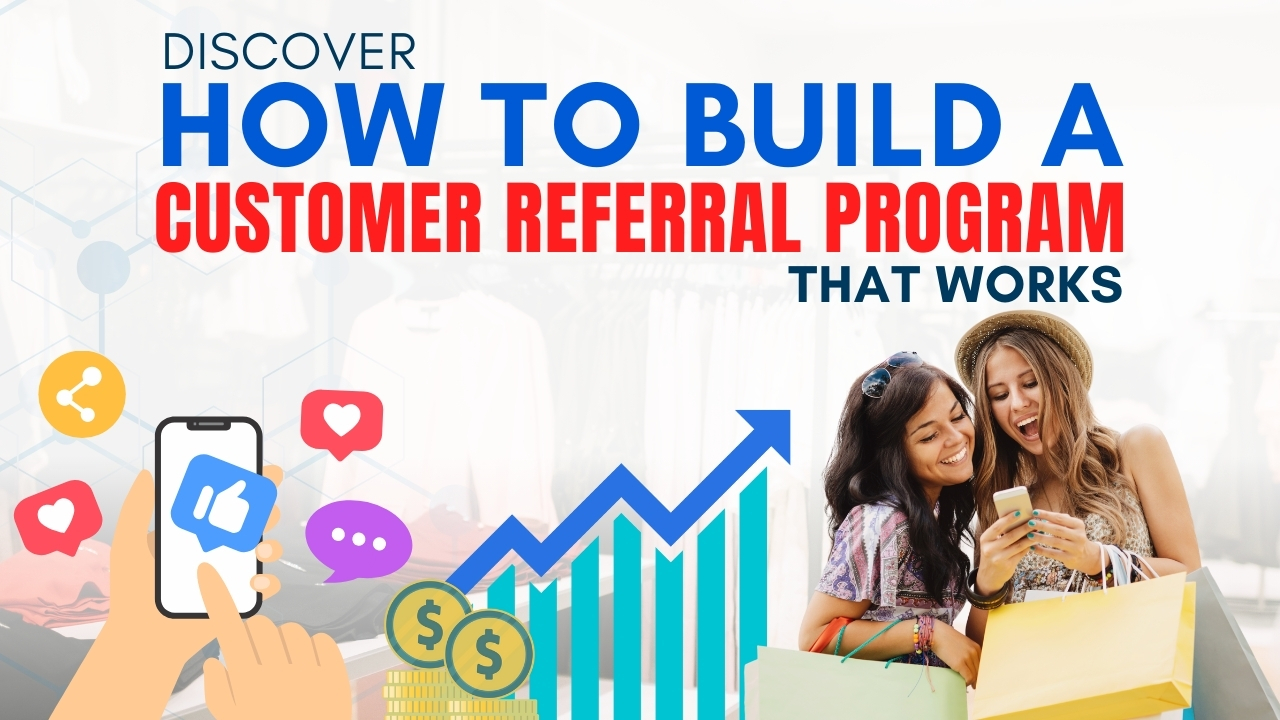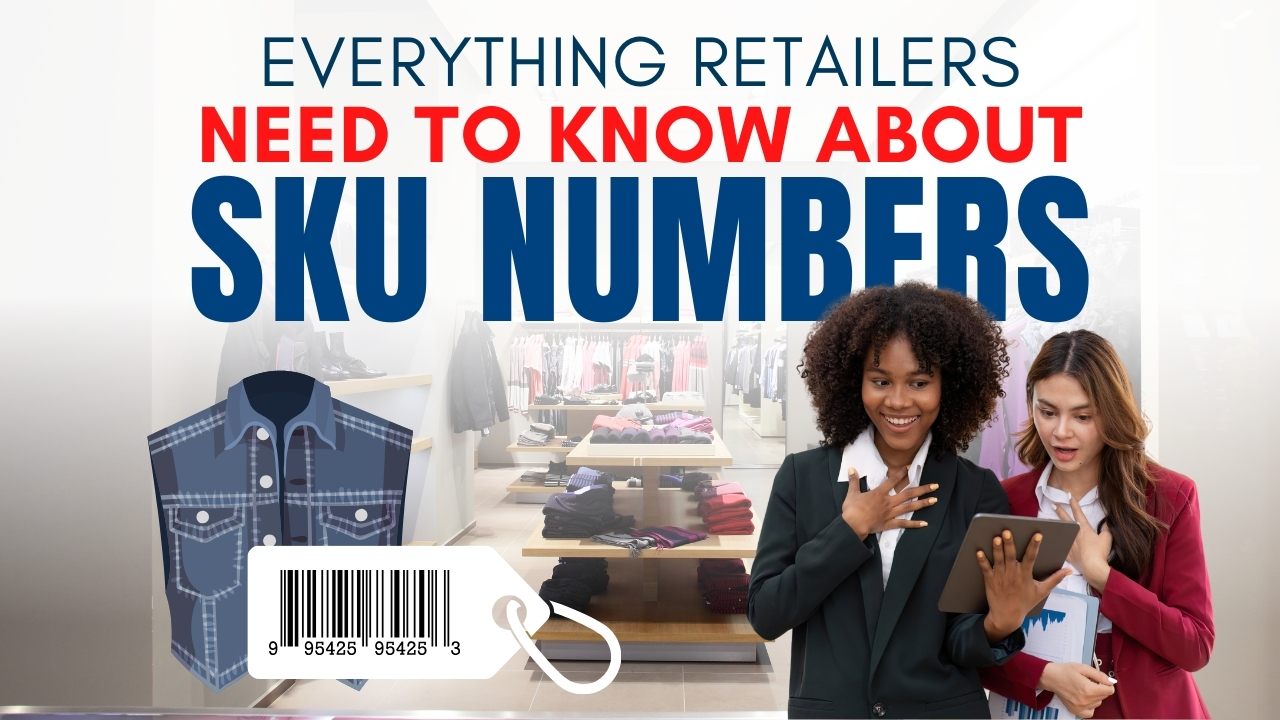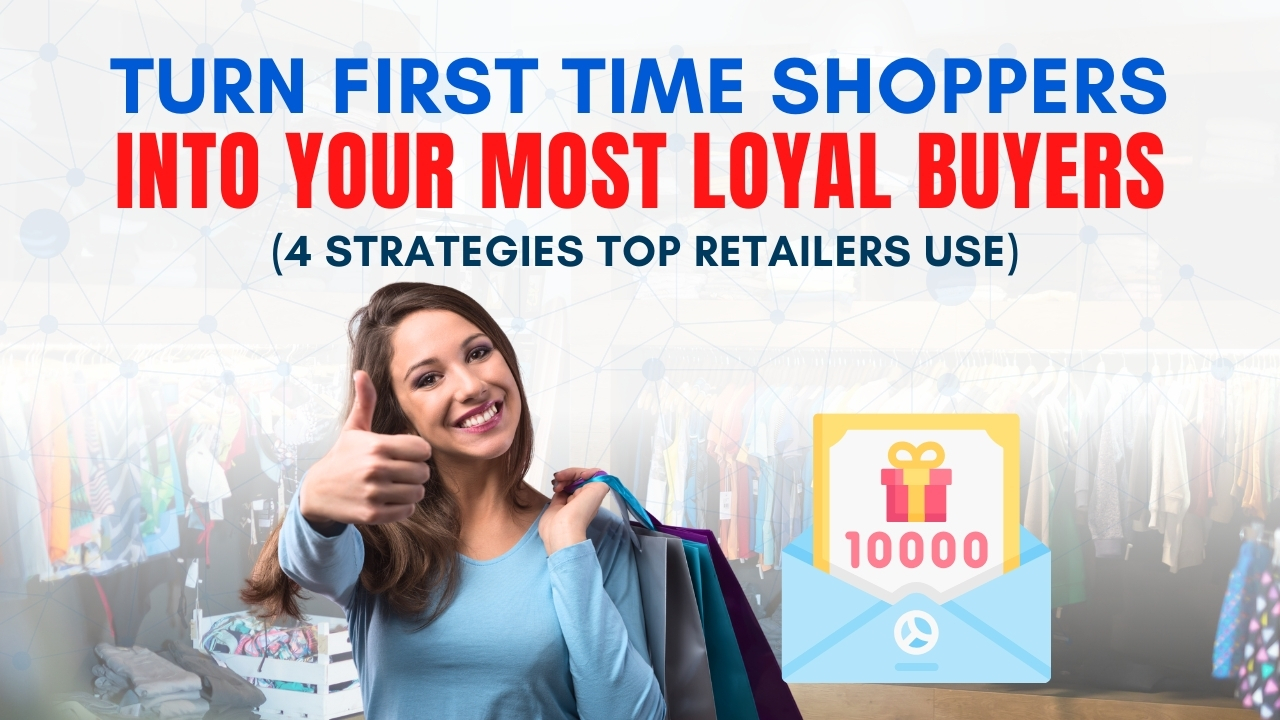Blog
Here’s How to Build a Customer Referral Program That Actually Works
May 8, 2025 / 10 minute read / By Zoya Naeem

Blog

You know that feeling when a friend recommends a really great pair of shoes, a new skincare brand, or a local shop you hadn’t heard of before, and you actually trust them more than an ad?
That’s the power of referrals.
A customer referral program is your way of turning that trust into a structured (and scalable) growth strategy. When done right, it’s no longer about discounts; it’s about rewarding loyalty, amplifying word-of-mouth, and building a customer base that genuinely wants to bring others in.
From running a small boutique to running a large-scale multiple-store retail business, a well-designed referral program can help you increase customer acquisition without relying on paid ads alone.
And the best part?
It doesn’t have to be complicated.
This guide will walk you through how to create a referral program that ACTUALLY works (one that your customers want to use and that your staff can manage without added hassle).
We’ll be talking about:
Sounds interesting? Let’s dive right into it.
If you’ve ever tried a new coffee shop just because a friend recommended it, you already know how powerful referrals can be. A customer referral program builds instant trust.
That’s because people don’t share brands they sort-of-like. They share brands they’ve had a great experience with, the ones that made things easy, memorable, or genuinely helpful. And while discounts or perks can give someone a little extra nudge, real motivation often comes from a place of connection. They want their friends to enjoy the same experience they did.
This is why referral customers tend to convert faster, spend more, and stick around longer.
And the best part? You don’t need a massive budget to see results. With the right structure in place, customer referral programs can do the heavy lifting while you focus on delivering great service.
If you’re building a referral program from scratch, start by mapping out what kind of experience you want your customers to share, and work backward from there. A streamlined retail system that keeps customer data, sales, and order history in one place can make it much easier to identify your best advocates and keep the experience consistent across every channel.
Once you’ve got the trust factor down, now you want to focus on building a customer referral program that actually works.
If someone has to decode a flowchart or read through a wall of text to figure out how to refer a friend, they’ll probably bounce. The most effective programs lay out the steps in plain language: Refer a friend → they get $10 off → you get $10 too. That’s it. Clean, clear, and conversion friendly.
The reward structure matters too. Offering something valuable to both the referrer and the referred creates a sense of fairness and excitement, but don’t just chase high-dollar incentives. Tailor your rewards to what makes sense for your brand and audience, for example, a boutique might offer exclusive early access to new collections instead of just discounts.
Sharing should be as frictionless as possible. Social links, referral codes, pre-filled text messages — especially on mobile, can go a long way. The goal is to make your customers feel like they’re doing their friends a favor, not filling out a form.
Lastly, communication is everything. From the moment someone joins your customer referral program, make sure they know exactly how it works, how they’ll benefit, and how they can track their referrals (clarity builds trust and keeps people engaged).
There’s no one-size-fits-all approach when it comes to building a referral strategy. The key is choosing a structure that fits your audience and goals, whether that’s boosting short-term sales, nurturing long-term loyalty, or building a strong community around your brand.
There are 3 most common types of customer referral programs that retailers use:
Using an all-in-one POS System like Cumulus Retail frees you from manually generating or managing barcodes for every size or color variation. The system auto-generates unique barcodes and even lets you layer in vendor UPCs when needed. It saves you a ton of time and reduces errors, especially when you scale.
Once you’ve got a sense of what kind of referral program might fit your brand, whether it’s incentivized, direct, or built on reputation. You must be thinking, how do you actually get one off the ground?
Well, here’s a step-by-step breakdown to help you set up a customer referral program that’s a meaningful growth channel for your retail business:
Start by being clear on why you’re launching a referral program. Are you aiming to increase new customer acquisition? Build stronger loyalty with current shoppers? Raise brand awareness in a specific community? Your goals will guide everything from your rewards to how you promote the program.
Each program has its strengths. If you’re focused on quick growth, an incentivized referral might be ideal, however, if you are looking to nurture brand loyalty? A direct or reputation-based approach may work better. Choose based on your goals and your audience.
The reward doesn’t need to be flashy, but it does need to feel fair. Make sure both the referrer and the referred customer see value, and don’t bury the details. Remember, clarity builds trust and boosts participation.
No one wants to jump through hoops to spread the word. Equip your customers with ready to use tools like personalized links, social share buttons, QR codes, or email templates. If it takes more than a few taps, you’re likely losing them.
The best customer referral programs don’t sit quietly in a corner of your website. Highlight yours across all your channels like your website, email campaigns, in-store signage, and even SMS receipts. The more visible it is, the more it’ll get used.
Referral programs aren’t a set it and forget it tool. Use your data to track who’s referring, how often, and what channels perform best, are your rewards enticing enough?, and is one store outperforming others? Minor tweaks can drive BIG results.
Once your referral program is up and running, it’s easy to get caught up in the surface-level numbers like signups, clicks, maybe a few shoutouts on social. But real success comes from tracking the right metrics that tell you whether your program is working, scaling, and ACTUALLY contributing to your business goals.
Here are a few referral-specific KPIs you’ll want to keep an eye on:
This one’s the most direct line to impact. How many new shoppers have come in thanks to your program? Whether it’s a code or a tracked link, you should be able to trace exactly where those new faces are coming from.
It’s not just about how many people share, it’s about how many people act. This metric shows the percentage of referral invites that result in a purchase, giving you insight into how compelling your reward and sharing experience really are.
Referral customers often bring in more value over time. Track how much they spend and how long they stay engaged compared to your average customer. It helps you understand the long-term ROI of your program.
Are your referral rewards paying off? Compare the total value of incentives given out to the revenue those referred customers generate. This will help you fine-tune rewards that feel generous but still make sense for your bottom line.
Customers who refer others tend to be more loyal, after all, they’ve put their name behind your brand. Measure how long they stick around and how often they shop again (that’s where the real brand advocacy shows up).
The strongest customer referral programs are built on trust, not pressure. They’re simple, consistent, and backed by real value for everyone involved.
Whether you’re aiming to attract new shoppers, boost repeat business, or expand your brand’s reach, the right referral strategy can get you there. But the key isn’t just the program, it’s the tools you build it with.
Retailers using modern, all-in-one systems have a major advantage as everything from sales and CRM to loyalty and promotions is connected. That means you’re not just guessing at what’s working you’re running targeted campaigns, tracking referrals, and optimizing performance with clear, actionable data.
And that’s exactly what Stratus Enterprise and Cumulus Retail platforms are designed for.
Whether you’re running a single store or a multi-location business, our powerful retail solutions make it easier to manage and grow your business without any headaches.
Curious to see how it works or which system is right for you?
 Learn what SKU Numbers are, how they work, and how you can use them to streamline your retail business… |
 Explore four simple strategies to keep your first-time buyers coming back (with a little help from your… |